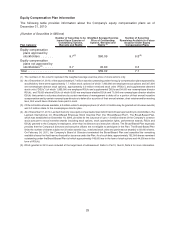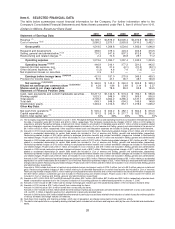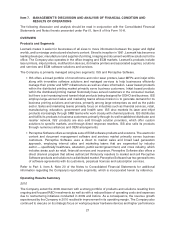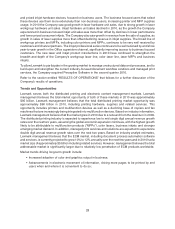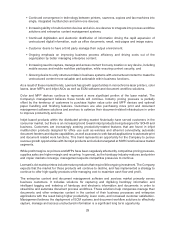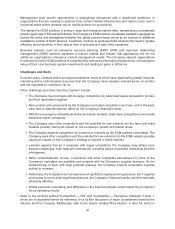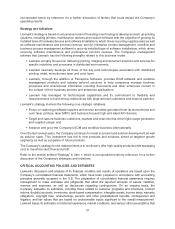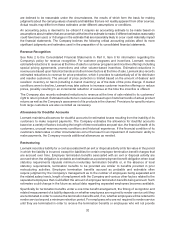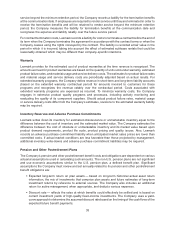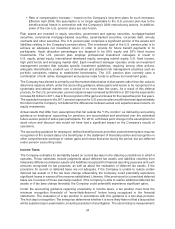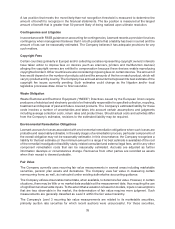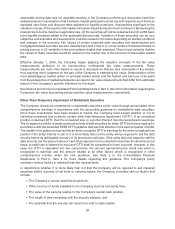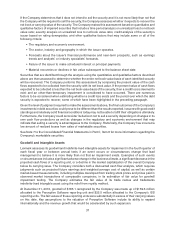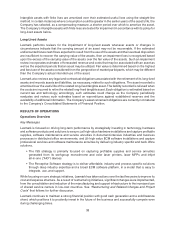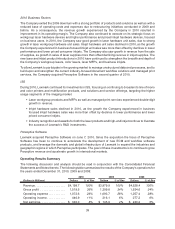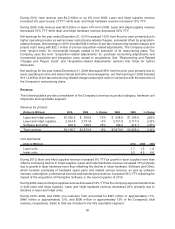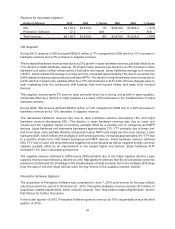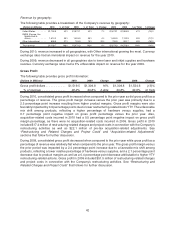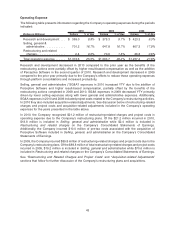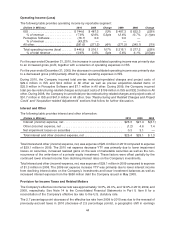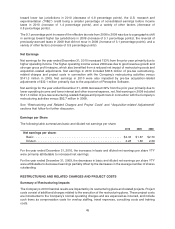Lexmark 2010 Annual Report Download - page 41
Download and view the complete annual report
Please find page 41 of the 2010 Lexmark annual report below. You can navigate through the pages in the report by either clicking on the pages listed below, or by using the keyword search tool below to find specific information within the annual report.A tax position that meets the more-likely-than-not recognition threshold is measured to determine the
amount of benefit to recognize in the financial statements. The tax position is measured at the largest
amount of benefit that is greater than 50 percent likely of being realized upon ultimate resolution.
Contingencies and Litigation
In accordance with FASB guidance on accounting for contingencies,Lexmark records a provision for a loss
contingency when management believes that it is both probable that a liability has been incurred and the
amount of loss can be reasonably estimated. The Company believes it has adequate provisions for any
such matters.
Copyright Fees
Certain countries (primarily in Europe) and/or collecting societies representing copyright owners’ interests
have taken action to impose fees on devices (such as scanners, printers and multifunction devices)
alleging the copyright owners are entitled to compensation because these devices enable reproducing
copyrighted content. Other countries are also considering imposing fees on certain devices. The amount of
fees would depend on the number of products sold and the amounts of the fee on each product, which will
vary by product and by country. The Company has accrued amounts that represent its best estimate of the
copyright fee issues currently pending. Such estimates could change as the litigation and/or local
legislative processes draw closer to final resolution.
Waste Obligation
Waste Electrical and Electronic Equipment (“WEEE”) Directives issued by the European Union require
producers of electrical and electronic goods to be financially responsible for specified collection, recycling,
treatment and disposal of past and future covered products. The Company’s estimated liability for these
costs involves a number of uncertainties and takes into account certain assumptions and judgments
including average collection costs, return rates and product lives. Should actual costs and activities differ
from the Company’s estimates, revisions to the estimated liability may be required.
Environmental Remediation Obligations
Lexmark accrues for losses associated with environmental remediation obligations when such losses are
probable and reasonably estimable. In the early stages of a remediation process, particular components of
the overall obligation may not be reasonably estimable. In this circumstance, the Company recognizes a
liability for the best estimate (or the minimum amount in a range if no best estimate is available) of the cost
of the remedial investigation-feasibility study, related consultant and external legal fees, and for any other
component remediation costs that can be reasonably estimated. Accruals are adjusted as further
information develops or circumstances change. Recoveries from other parties are recorded as assets
when their receipt is deemed probable.
Fair Value
The Company currently uses recurring fair value measurements in several areas including marketable
securities, pension plan assets and derivatives. The Company uses fair value in measuring certain
nonrecurring items as well, as instructed under existing authoritative accounting guidance.
The Company utilizes observable market data, when available, to determine fair value. However, in certain
situations, there may be little or no market data available at the measurement date, thus requiring the use
of significant unobservable inputs. To the extent that a valuation is based on models, inputs or assumptions
that are less observable in the market, the determination of fair value requires more judgment. Such
measurements are generally classified as Level 3 within the fair value hierarchy.
The Company’s Level 3 recurring fair value measurements are related to its marketable securities,
primarily auction rate securities for which recent auctions were unsuccessful. For these securities,
35


